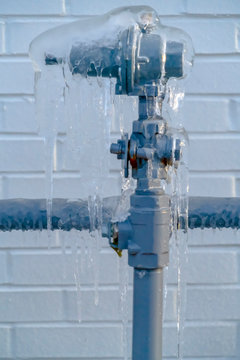Important Advice to Prevent Frozen Plumbing in Cold Weather: Expert Insights
Important Advice to Prevent Frozen Plumbing in Cold Weather: Expert Insights
Blog Article
The author is making a few good pointers related to How to prepare your home plumbing for winter weather overall in this content further down.

Cold weather can damage your plumbing, specifically by freezing pipelines. Here's how to prevent it from occurring and what to do if it does.
Introduction
As temperatures decline, the risk of frozen pipes increases, possibly bring about pricey repair work and water damages. Comprehending how to avoid icy pipes is critical for homeowners in chilly climates.
Understanding Frozen Pipes
What causes pipes to ice up?
Pipelines ice up when revealed to temperature levels below 32 ° F (0 ° C) for extended periods. As water inside the pipelines ices up, it broadens, taxing the pipeline wall surfaces and possibly triggering them to break.
Dangers and damages
Icy pipelines can bring about supply of water interruptions, residential or commercial property damage, and pricey repair work. Ruptured pipes can flood homes and cause extensive architectural damage.
Signs of Frozen Piping
Recognizing frozen pipelines early can avoid them from breaking.
Just how to identify icy pipelines
Seek decreased water circulation from faucets, uncommon smells or noises from pipelines, and visible frost on revealed pipelines.
Prevention Tips
Insulating prone pipelines
Cover pipelines in insulation sleeves or make use of warmth tape to shield them from freezing temperatures. Focus on pipes in unheated or external locations of the home.
Home heating strategies
Maintain interior spaces properly heated up, especially areas with plumbing. Open closet doors to enable cozy air to circulate around pipelines under sinks.
Securing Outside Plumbing
Yard pipes and outdoor taps
Detach and drain pipes yard hose pipes before winter season. Install frost-proof faucets or cover outside faucets with shielded caps.
What to Do If Your Pipelines Freeze
Immediate activities to take
If you think frozen pipelines, keep faucets open up to eliminate pressure as the ice thaws. Utilize a hairdryer or towels taken in hot water to thaw pipelines gradually.
Long-Term Solutions
Architectural modifications
Think about rerouting pipelines far from outside wall surfaces or unheated areas. Add extra insulation to attics, basements, and crawl spaces.
Updating insulation
Buy premium insulation for pipes, attics, and walls. Appropriate insulation helps maintain consistent temperatures and reduces the danger of icy pipelines.
Verdict
Protecting against frozen pipelines calls for positive procedures and quick responses. By comprehending the causes, indications, and preventive measures, home owners can safeguard their plumbing throughout cold weather.
5 Ways to Prevent Frozen Pipes
Drain Outdoor Faucets and Disconnect Hoses
First, close the shut-off valve that controls the flow of water in the pipe to your outdoor faucet. Then, head outside to disconnect and drain your hose and open the outdoor faucet to allow the water to completely drain out of the line. Turn off the faucet when done. Finally, head back to the shut-off valve and drain the remaining water inside the pipe into a bucket or container. Additionally, if you have a home irrigation system, you should consider hiring an expert to clear the system of water each year.
Insulate Pipes
One of the best and most cost-effective methods for preventing frozen water pipes is to wrap your pipes with insulation. This is especially important for areas in your home that aren’t exposed to heat, such as an attic. We suggest using foam sleeves, which can typically be found at your local hardware store.
Keep Heat Running at 65
Your pipes are located inside your walls, and the temperature there is much colder than the rest of the house. To prevent your pipes from freezing, The Insurance Information Institute suggests that you keep your home heated to at least 65 degrees, even when traveling. You may want to invest in smart devices that can keep an eye on the temperature in your home while you’re away.
Leave Water Dripping
Moving water — even a small trickle — can prevent ice from forming inside your pipes. When freezing temps are imminent, start a drip of water from all faucets that serve exposed pipes. Leaving a few faucets running will also help relieve pressure inside the pipes and help prevent a rupture if the water inside freezes.
Open Cupboard Doors
Warm your kitchen and bathroom pipes by opening cupboards and vanities. You should also leave your interior doors ajar to help warm air circulate evenly throughout your home.

As an avid person who reads on How To Avoid Freezing Pipes, I imagined sharing that piece of content was sensible. If you liked our blog entry kindly do not forget to pass it around. Thanks a bunch for being here. Revisit us soon.
Book Service Now Report this page